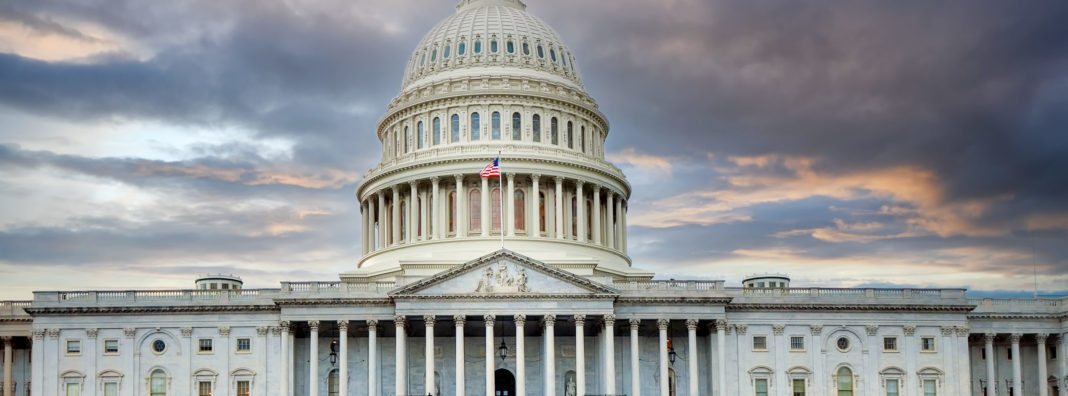
Testimony before the US Congress Joint Economic Committee Hearing: “Examining the Economic Benefits of Electrifying America’s Homes and Buildings”
September 22, 2021
Thank you, Vice Chairman Heinrich, Ranking Member Lee, and members of the committee for the opportunity to testify today on electrification as a strategy to address climate change. My name is Eli Dourado. I am a senior research fellow at the Center for Growth and Opportunity at Utah State University. I study the technologies that could bring about transformative economic growth and the obstacles they face.
Climate change is a technology problem. New technologies are our only realistic hope to significantly reduce carbon emissions. The way to address climate change, then, is not to deindustrialize society and go back to a less prosperous past, it is to charge boldly into the future. On that, I believe, we all strongly agree.
There is a slogan that represents one vision of this future: “Electrify everything.”
Like all slogans, it oversimplifies. I’d like to use this opportunity to raise some nuance and offer some additional solutions that will make us more likely to achieve our decarbonization goals.
To this end, I recommend this committee focus on the following priorities as it considers its electrification agenda:
- Be realistic about necessary electrical system upgrades
- Make it easier to build
- Avoid picking winners and losers
- To make the economy boom, clear the way for cheap and abundant clean energy
Be realistic about necessary electrical system upgrades
Electrifying heating makes financial sense for many, but not all, individual homeowners. According to research from the Rocky Mountain Institute, electric heat pumps would lower costs for customers replacing oil or propane heating systems, and for most new construction, but not usually for customers using modern natural gas furnaces.1Sherri Billimoria et al., “The Economics of Electrifying Buildings” (Rocky Mountain Institute, 2018), https://rmi.org/wp-content/uploads/2018/06/RMI_Economics_of_Electrifying_Buildings_2018.pdf. The economics are generally worse in colder regions of the country, as air-source heat pumps operate less efficiently the colder the air is outside.
Even if heat pumps make individual economic sense, they may not make collective economic sense until upgrades are available for our electric grid and generation capacity. Mass adoption of electric heat pumps, particularly in the coldest parts of the country where they are least efficient and most utilized throughout the year, will flip the time of peak electricity demand from summer to winter. Since our current system is only built to the capacity of the summer peak, without new capacity, the coldest winter days would be met with rolling winter blackouts at exactly the time we most need reliable energy.
Furthermore, heating is a safety-critical service. People die if the heating goes out. A study by the National Center for Health Statistics found that twice as many Americans die from excessive cold as excessive heat.2Jeffrey Berko et al., “Deaths Attributed to Heat, Cold, and Other Weather Events in the United States, 2006–2010,” National Health Statistics Reports 76 (National Center for Health Statistics, July 30, 2014), https://www.cdc.gov/nchs/data/nhsr/nhsr076.pdf.
The United States has one of the least reliable electricity grids in the developed world.3Ula Chrobak, “The US Has More Power Outages than Any Other Developed Country. Here’s Why,” Popular Science, August 17, 2020, https://www.popsci.com/story/environment/why-us-lose-power-storms/. If we want to rely on electricity for safety of life, we must invest in grid hardening, like placing wires underground where they can’t be downed by falling trees. It is not sufficient to simply add long-distance transmission lines from low-cost wind and solar farms. If local grids go down, people could die.
To completely electrify heating, then, is not as simple a solution as some of its proponents say it will be. It would require building new reliable peak capacity and hardening the existing grid.
Make it easier to build
If we are going to do so much building—new peak-load power plants, undergrounding of wires, new long-distance transmission lines, and new wind and solar farms—it is worth first addressing the excessive cost of building new infrastructure in this country. Among the chief culprits are laws that give project opponents a way to slow or stop the permitting and siting process. Laws intended to support environmental justice, like the National Environmental Policy Act (NEPA), have instead been weaponized by NIMBYs or competitors to slow progress. For example, Vineyard Wind, the US’s first large-scale offshore wind farm, currently faces three lawsuits under NEPA, including one by a rival solar developer.4Miriam Wasser, “Fishermen Challenge Federal Approval Of First Large-Scale Offshore Wind Project,” WBUR, September 13, 2021, https://www.wbur.org/news/2021/09/13/roda-fishermen-lawsuit-vineyard-wind-boem. These lawsuits threaten to extend an already-protracted permitting process.
Research from the Brookings Institution found that Interstate highway construction costs tripled between the 1960s and the 1980s.5Leah Brooks and Zachary D. Liscow, “Infrastructure Costs,” Hutchins Center Working Paper 54 (Brookings Institution, August 2019), https://www.brookings.edu/wp-content/uploads/2019/08/WP54_Brooks-Liscow_updated.pdf. The researchers attributed the increase in cost to the rise of “citizen voice” and dated the inflection point to the early 1970s, consistent with the major culprit being NEPA, which took effect on January 1, 1970.
By lengthening and adding risk to the permitting process, NEPA makes financing large, capital-intensive projects less attractive. Some have proposed new federal subsidies for long-distance transmission projects to overcome this obstacle.6For example, S.1016 in the current Congress. While subsidies for these projects may be desirable in isolation, it is unwise to spend taxpayer money to overcome a permitting obstacle that Congress created and has the tools to fix. Congress should first remove the permitting obstacles and then consider whether new subsidies are still necessary. Even if they are still necessary, they would return much higher value for the taxpayer with the permitting obstacles removed.
Furthermore, as I noted above, we need more than just long-distance, high-voltage transmission lines. We need new, peak-load power plants, and we need to harden the local grid. In addition, the country would greatly benefit from new, zero-carbon baseload power plants, either nuclear or geothermal. To accommodate all of this building, we need thoroughgoing permitting reform of the kind that has been proposed in S.717, the UNSHACKLE Act. Comprehensive permitting reform would make the electrification agenda significantly more plausible and attractive.
Avoid picking winners and losers
A downside of a strong policy focus on electric heat pumps is that it puts politicians in the role of picking the winning technology. If left to compete on a level playing field, a range of other possible solutions, including non-electric options, could help to decarbonize heating.
For example, many people underrate the benefits of district heating. Cities like Copenhagen, Reykjavik, and Boise have had district heating for years. While Reykjavik and Boise’s systems rely on low-temperature geothermal heat, Copenhagen’s, which covers 97% of the city and much of the surrounding area, is powered by waste heat from waste incineration plants and combined heat and power plants.7“C40: 98% of Copenhagen City Heating Supplied by Waste Heat,” C40 Cities, November 3, 2011, https://www.c40.org/case_studies/98-of-copenhagen-city-heating-supplied-by-waste-heat. Boise’s system powers the city’s downtown and costs only $1000 per winter month to operate.8Mckenna King, “An inside Look at the Largest Geothermal Heat System in the US,” WCPO, December 6, 2018, https://www.wcpo.com/news/national/an-inside-look-at-the-largest-geothermal-heat-system-in-the-us. Between district heating and smaller systems, direct-use geothermal systems in Iceland supply 90% of the country’s heating needs.9“Direct Use of Geothermal Resources,” National Energy Authority, accessed September 14, 2021, https://nea.is/geothermal/direct-utilization/nr/91.
Historically, such geothermal systems as exist in Boise and Reykjavik have depended on the availability of a suitable low-temperature geothermal resource. Modern drilling technology now makes it possible to construct such a resource virtually anywhere in the country. A modern, direct-use geothermal district heating system could supply an entire city with cheap, clean, non-electric heat. By avoiding a technology-specific subsidy, we could let competition and entrepreneurs, not Congress, determine the best way to decarbonize heating.
Carbon removal strategies are also an exciting piece of the solution. Enhanced weathering and ocean alkalinization seem like especially promising approaches, removing carbon dioxide from the atmosphere at a fraction of the cost of other known methods. If we could remove atmospheric carbon dioxide so cheaply on an arbitrarily large scale, it might not matter that some homes in the colder regions of the country stick with natural gas heat.
Instead of selecting one technology to decarbonize heating on its own, Congress should avoid picking winners and losers.
To make the economy boom, clear the way for cheap and abundant clean energy
Addressing climate change does not have to be bad for the economy, but the political focus on job creation is economically backward. Electric vehicles have many advantages over combustion vehicles, but one of them is that they have fewer moving parts and therefore require less maintenance expense. This reduction in maintenance requirements will translate to thousands of mechanic jobs being destroyed. Should we oppose electric vehicles on this score? Of course not.
To an economist, a job is a cost, not a benefit. A new job is a requirement to allocate scarce labor resources to solve a particular problem, at an expense that ultimately falls on the consumer. It would be better, economically speaking, if the problem and the expense vanished, along with the job. Nothing is more likely to derail our response to climate change than turning it into a jobs-creating boondoggle.
If not in jobs, where does the economic opportunity from climate change lie? Rethinking energy.
We have observed stunning cost reductions in wind and solar energy production over the last two decades. Even so, wind and solar by themselves are not up to the task of powering the entire country. We need to take advantage of additional carbon-free energy sources that are not only cheap, but also firm, dense, and able to be sited anywhere: advanced nuclear and advanced geothermal technology.
Modern small modular reactors provide safe and efficient nuclear power in an appealing form factor, but they, along with the rest of the nuclear industry, have been hobbled by overregulation. The Nuclear Regulatory Commission’s approval process costs hundreds of millions of dollars. 10Jason Crawford, “Why Has Nuclear Power Been a Flop?,” The Roots of Progress, April 16, 2021, https://rootsofprogress.org/devanney-on-the-nuclear-flop.
Advanced geothermal energy is a resource more than 40 times greater than all the fossil fuels and fissionable material on the planet combined.11Wes Hermann and A. J. Simon, “Global Exergy Flux, Reservoirs, and Destruction” (Global Climate and Energy Project at Stanford University), accessed September 15, 2021, https://gcep.stanford.edu/pdfs/GCEP_Exergy_Poster_web.pdf; Eli Dourado, “The State of Next-Generation Geothermal Energy,” Elidourado.com, July 6, 2021, https://elidourado.com/blog/geothermal/. Yet it is hobbled by permitting problems on federal lands. Oil and gas wells can get approved by BLM in two weeks. The same wells for geothermal purposes take two years.12Eli Dourado, “The Biggest No-Brainer in All of Energy Policy,” The Center for Growth and Opportunity, November 2, 2020, https://www.thecgo.org/benchmark/the-biggest-no-brainer-in-all-of-energy-policy/.
If we solve these policy problems, we could double or triple per capita primary energy use while reducing net carbon emissions below zero. That would truly make the economy boom.
I once again thank the committee for the opportunity to testify, and I look forward to your questions.
Download Eli Dourado’s Testimony here: 9.22.21 US Congress Joint Economic Committee

